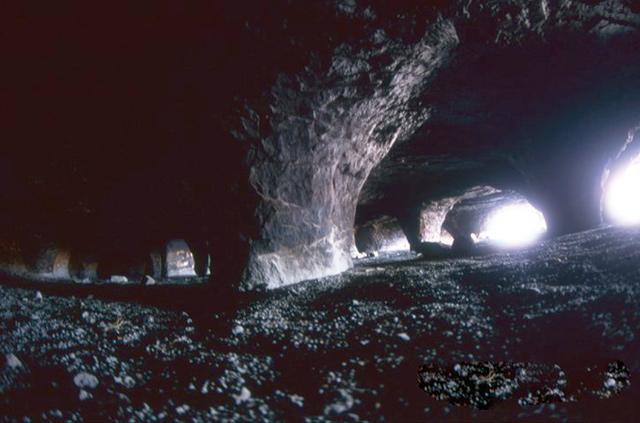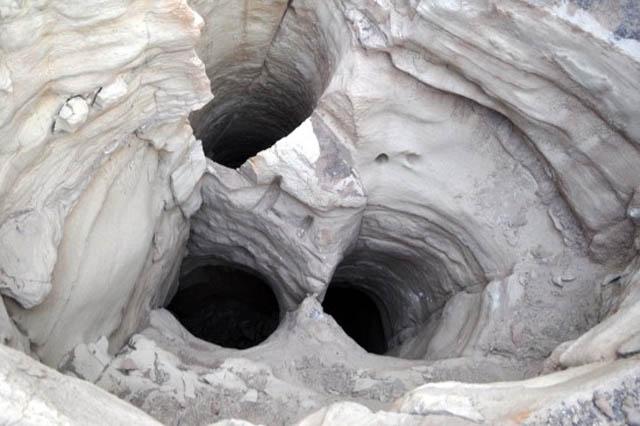You are here
‘Feynan region offers great research potentials’ on ancient copper production
By Saeb Rawashdeh - Dec 04,2016 - Last updated at Dec 04,2016

Slag (waste product of copper smelting) is seen in this recent photo taken in Wadi Feynan (Photo courtesy of Mohammad Najjar)
AMMAN — Metal production has always been part of human culture and never ceased completely at any historical period, according to scholar Mohammad Najjar.
Pyro-technology (altering physical properties of materials by exposing them to high temperatures) started in the Palaeolithic age with fire utilised to alter “properties of flint to produce flint tools”, the archaeologist explained.
In the Neolithic period (10,000 years ago) the lime plaster was made to be used as a material for statues of which some were found in Ain Ghazal, the scholar stressed, adding that it was used to cover both floors and walls of houses “for aesthetic and practical reasons”.
This practice paved the way for copper smelting and the discovery of pottery, he underlined.
Copper production on the industrial scale in the region was intensified during the Early Bronze Age (2900-1900BC), the Iron Age (1000-800 BC) and the Roman-Byzantine period (300-600 AD).
Nabataean copper mines were documented but never thoroughly studied, and the common method of digging were “pillared galleries” said Najjar, who worked at the Department of Antiquities from 1982 to 2007, and served as director of excavations.
Shaft and gallery technique was the method during the Bronze and Iron Ages and the Roman period, when shafts were dug and then tunnels or galleries branched out from them for ore mining, the archaeologist told The Jordan Times in a recent interview.
The Roman Empire would condemn (Damnatio ad metalla) members of the local Christian communities to work under harsh conditions in copper mines especially when the empire organised massive persecutions of Christians (303-311 AD), he explained.
“The significance of these copper mines derived from the fact that early Christians were condemned to them as an ultimate punishment that makes the area extremely important for the early history of Christianity in Jordan and in the region,” the scholar underscored.
Once Christianity became the state religion under Emperor Constantine, the practice continued as Christian emperors would condemn members of other denominations considered heretical to work in copper mines.
Ancient Greek and Roman philosophers opposed mining, considering it as a “violation of the Earth” and as a sacrilege because “the home of dead was intruded”.
In Jordan, the Feynan region, some 230km south of Amman, was known for copper mines as well as being the worst place for slaves who worked there due to its geology, according to Najjar, who citied the Romans’ “inhumane treatment of the miners and the fragmentation of ore deposits, which required oversized galleries that would crash and kill slaves”.
“The region of Feynan has tremendous research potentials not only for ancient copper production but also for the Neolithic period during which early villages appeared and traces of domestication of animals and plants were evident,” the expert underlined.
“The shift from hunting gathering to subsistence strategies to farming during this period was a landmark in human history,” explained Najjar, who also works as a heritage consultant in USAID funded projects in Jordan.
“In the very next future we — University of California San Diego and the Council of British Research in the Levant — will be working with the on creating a state-of-the-art museum to make the discovered archaeological materials accessible to researchers and to the visitors of Feynan,” he concluded.
Related Articles
AMMAN — Both the cultural and environmental heritage of Wadi Feynan are supposedly protected by the Law of Antiquities No.
AMMAN — Wadi Faynan, located 250 kilometres southwest of Amman, was well known in ancient times for its copper ore.“The earliest evidence fo
AMMAN — Excavations in the lowlands of Edom show conclusively that the Iron Age social complexity and emergence of the Kingdom of Edom, know

















